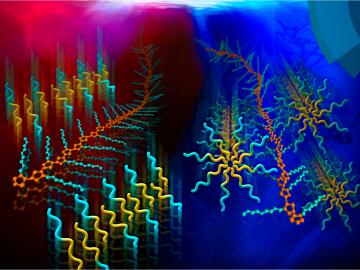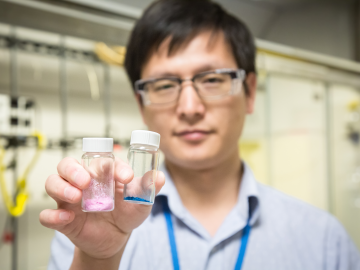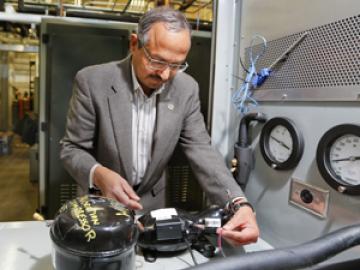
First-generation graduate Brittany Rodriguez advances manufacturing scie...





A research demonstration unveiled today at the Department of Energy’s Oak Ridge National Laboratory combines clean energy technologies into a 3D-printed building and vehicle to showcase a new approach to energy use, storage and consumption. The Additive Manufactur...




The Department of Energy’s Oak Ridge National Laboratory and Whirlpool Corporation are collaborating to design a refrigerator that could cut energy use by up to 40 percent compared with current models

For more than 50 years, scientists have debated what turns particular oxide insulators, in which electrons barely move, into metals, in which electrons flow freely.

